Weapons testing leads Sandians to Nevada
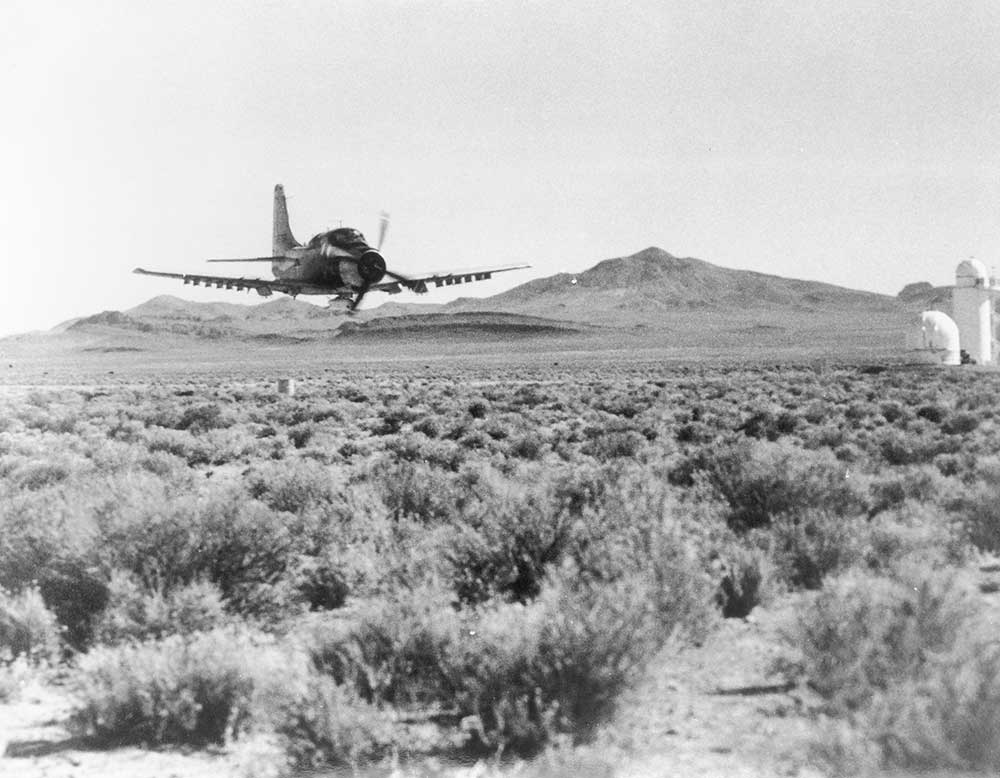
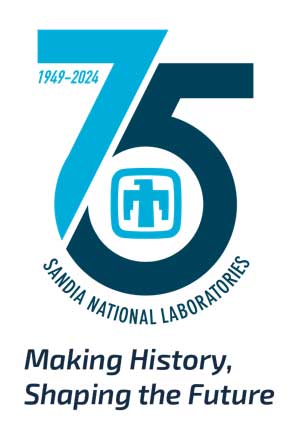
Located in the desolate Nevada desert, the Tonopah Test Range serves an important national security mission. Since 1957, Sandians have helped ensure the reliability and safety of designs for current and future weapons and their delivery systems through their work at the test range.
Today, about 60 people — 25 Sandians and about 35 employees from Navarro Research and Engineering — work at Tonopah, where the mission has remained steady through the years. “The primary mission out here has always been to do flight testing in support of the nuclear deterrence mission,” range manager Brian Adkins said. “Tonopah remains relevant today because it’s the only test range where we do full end-to-end testing on air-delivered mock weapons and their components. Without our team, the president would have no idea whether his nuclear weapons stockpile for the air-delivered weapons is reliable.”
End-to-end testing
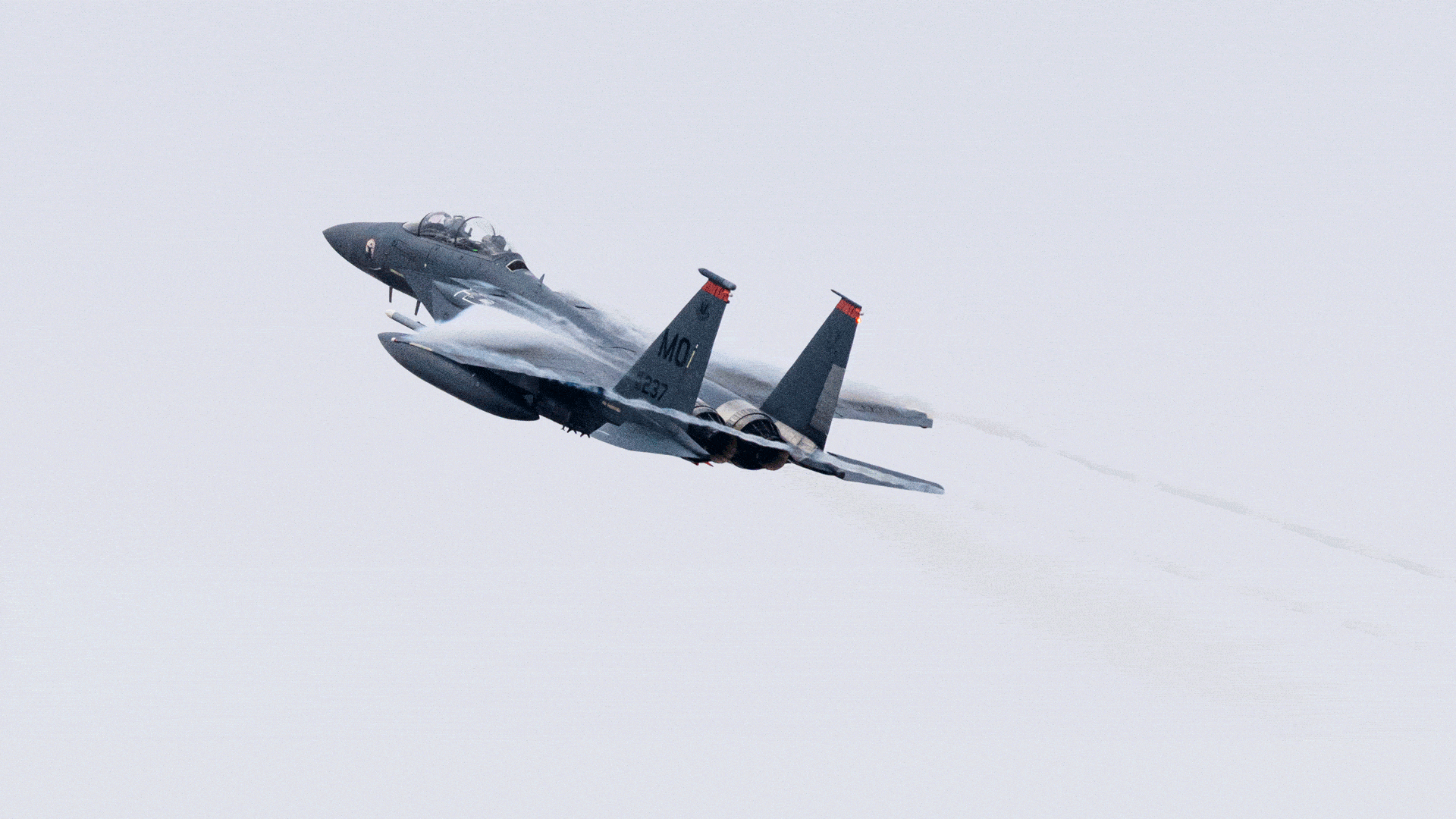
Brian calls end-to-end testing an orchestrated assessment. It starts with getting the weapon out of storage, removing the nuclear physics package from the unit and then replacing it with a telemetry package. A telemetry package is a digital instrumentation component that gathers and transmits performance and functionality data from the test unit.
The test unit is then loaded onto the aircraft that will drop it at the Tonopah Test Range. Once dropped on a specific target at the range, Tonopah crews recover the unit and ship it to another site for forensic analysis. The test site also gathers real-time data from test flights that is fed into the control tower and shared with the flight systems engineer.
The data help shape the Labs director’s annual letter to the president about the status of the nuclear stockpile. “If we don’t get the mission done here, we won’t have data to make it into the report for the president and Congress,” Brian said.
Before Tonopah
In late 1945, weapons assembly and test teams that worked on the Manhattan Project at Los Alamos National Laboratory and Wendover Army Air Force Base in Utah transferred to what is now Kirtland Air Force Base. These teams were adamant that weapons needed to be 100% reliable, meaning that the weapon would release from the aircraft properly, fall directly toward the target and detonate at the precise elevation and timing. Field testing was key to determining whether the weapons designs would work.
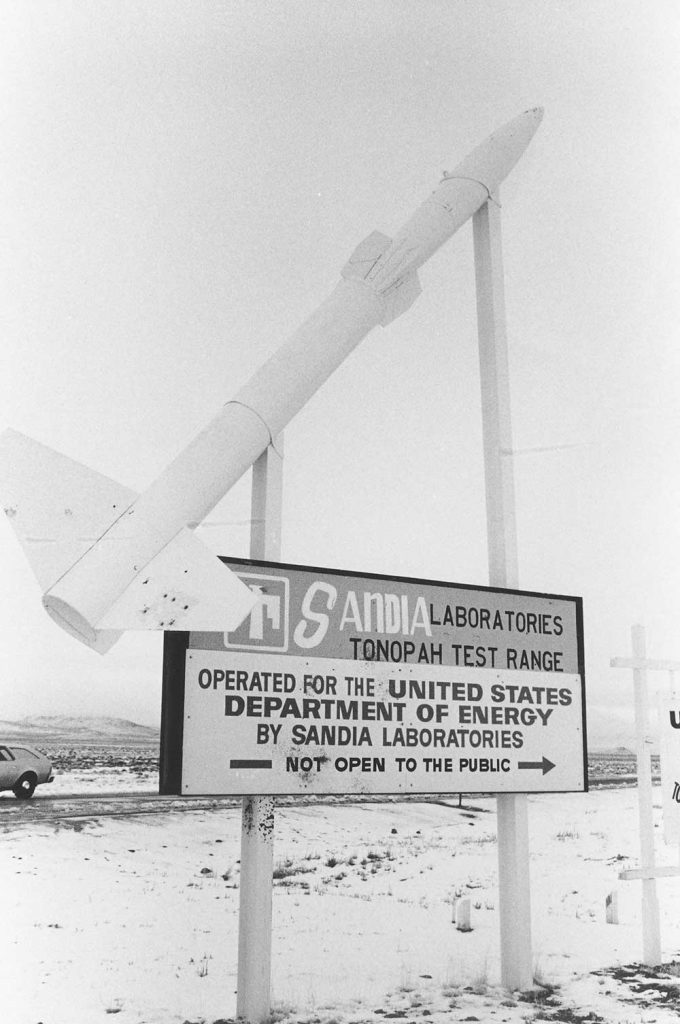
Area III was created south of Kirtland Air Force Base for environmental testing of nonnuclear components and subassemblies. Area III had centrifuges, sled tracks and other facilities. But to do full-up field testing, a wide-open range, free of urban development and commercial air traffic was needed.
Before Tonopah, Sandia used sites at Los Lunas, New Mexico; Salton Sea, California; and Yucca Flat, Nevada, for conducting tests.
Los Lunas
Between 1945 and 1946, scientists used a practice bombing range near Los Lunas, south of Albuquerque, for testing. While no test facilities were built, camera and target station markers were installed, and equipment was brought in for each test. Scientists used Los Lunas for ballistics testing, controlling nonnuclear bomb trajectory and accuracy.
Salton Sea
In 1946, most testing stopped in Los Lunas because Salton Sea in Southern California was selected as Sandia’s test range. The Navy had operated Salton Sea Test Base, which served various military testing operations during World War II.
Under the agreement with Sandia, the Army operated the base, while Sandia managed technical and testing operations. Sandia rebuilt old Navy targets and installed camera pads. The Atomic Energy Commission invested $3.5 million into improvements at Salton Sea Test Base in 1947.
Sandia’s first test drop at Salton Sea was completed March 12, 1947. About 150 tests were conducted each year. In 1950, Sandia took over full operations of Salton Sea. Initially, most of the tests were to check weapons ballistics.
Scientists were also interested in how existing weapons in the stockpile would respond to a variety of environmental conditions. Weapons from the stockpile were disassembled, inspected and then tested without fissionable material.
Outgrowing Salton Sea
As fighter aircraft equipment advanced, it became more difficult for Sandia’s scientists to track higher and faster planes at Salton Sea. More people living near the base, more commercial air traffic and the Los Angeles haze started impacting testing operations.
By 1954, Sandia found a new test location: Yucca Flat at the Nevada Test Site. For a couple of years, Sandia crews from Salton Sea traveled to Yucca Flat for testing. Yucca was adequate for high-altitude test drops, but mountains on three sides did not make it ideal for low-altitude drops. The Nevada Test Site served primarily as a test site for nuclear weapons, which was receiving priority over Sandia’s testing.
Tonopah Ballistic Range
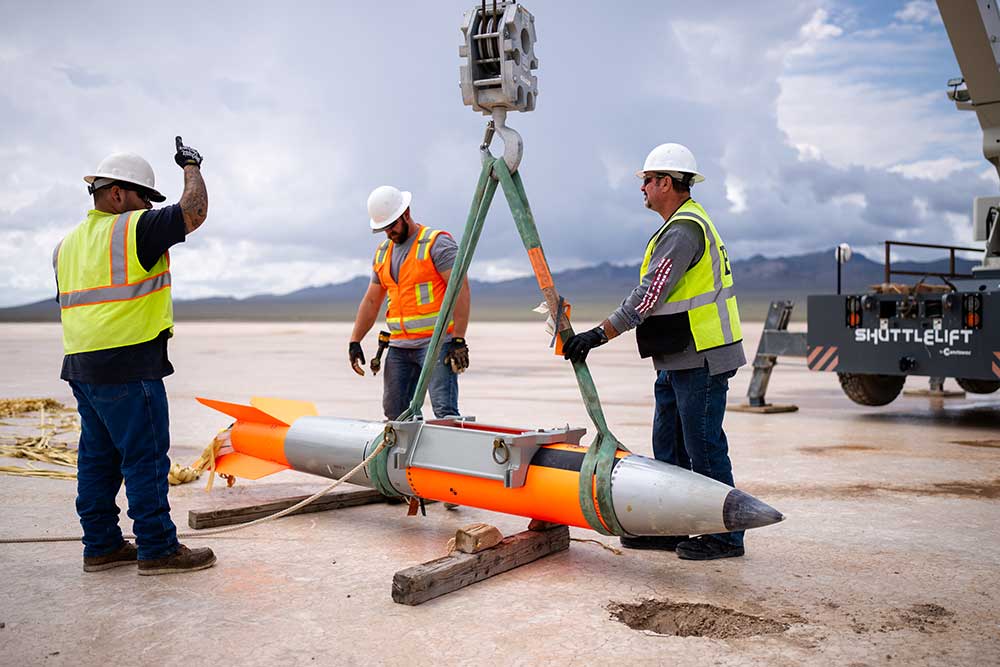
In 1956, the search began for a new test site that could serve Sandia and the DOD. The Navy expressed interest in an area called Cactus Flats, on the Nellis Air Force Base Range in Nevada. The open, dry and barren site allowed for excellent visual coverage of nonnuclear bomb drops.
Construction started on the Tonopah Ballistic Range in August 1956. Six months later, in February 1957, the first test was conducted at the Tonopah range. Crews from the Salton Sea site traveled to Tonopah for testing as needed.
The Tonopah Ballistic Range was initially intended to be a temporary test site, while Sandia and the Air Force worked to acquire a joint test site in Arizona. Those plans eventually fell through. Testing at the range was so successful that in February 1959, Sandia management announced Tonopah would be Sandia’s permanent test site.
“Today Tonopah remains Sandia’s premier off-site test range,” Brian said.
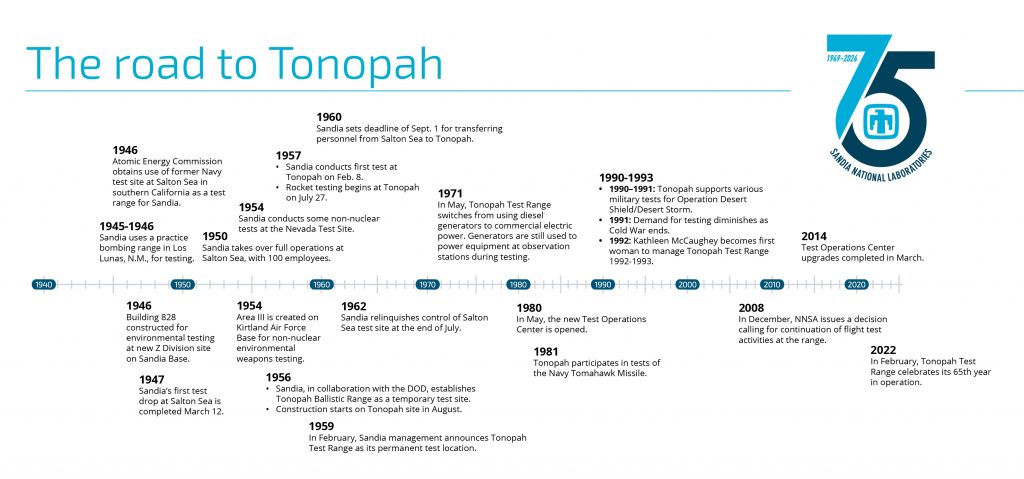
Today’s capabilities
While the mission has remained unchanged, the same cannot be said about the capabilities and equipment at the test range. The range covers about 200 square miles. Some of the equipment for testing includes: a test operations center, radars, neutron detectors, optical tracking systems, telemetry stations and weather stations.
Life at the test range today
The Tonopah Test Range has other types of equipment that you would find in a small city. “We have excavators, road graders, trash trucks and snow removers,” Brian said.
Many Sandians who work at Tonopah live in Las Vegas, which is about a four-hour drive one-way. Employees who live in Las Vegas work 40 hours over a three-day period, Tuesday through Thursday. They make the four-hour drive to work Tuesday mornings and then stay on-site at a large complex of motel-styled buildings known as the Mancamp.
“We have permanent assigned rooms. We go to the same room every week,” Brian said.
The rooms were recently upgraded with new furniture. Each room has a flat-screen TV with cable, a refrigerator and a landline telephone since cellphones are not allowed at the test range. There’s also a cafeteria nearby that serves hot food three times a day.
The employees who live in Tonopah, which is about 45 minutes away from the test range, typically work ten hours a day, four days a week.
Brian says his small but mighty team has built a strong camaraderie, including the 35 to 40 employees from Navarro Engineering and Research, whom he considers part of the Sandia family.
“We all work well together as a team and for the same goal. It’s a family atmosphere out here. We look out for each other like family to make sure everyone stays safe. We factor safety into everything we do out here,” Brian said.
EDITOR’S NOTE: Historical information in this article was compiled from Sandia Report: Tonopah Test Range Outpost of Sandia National Laboratories SAND96-0375.